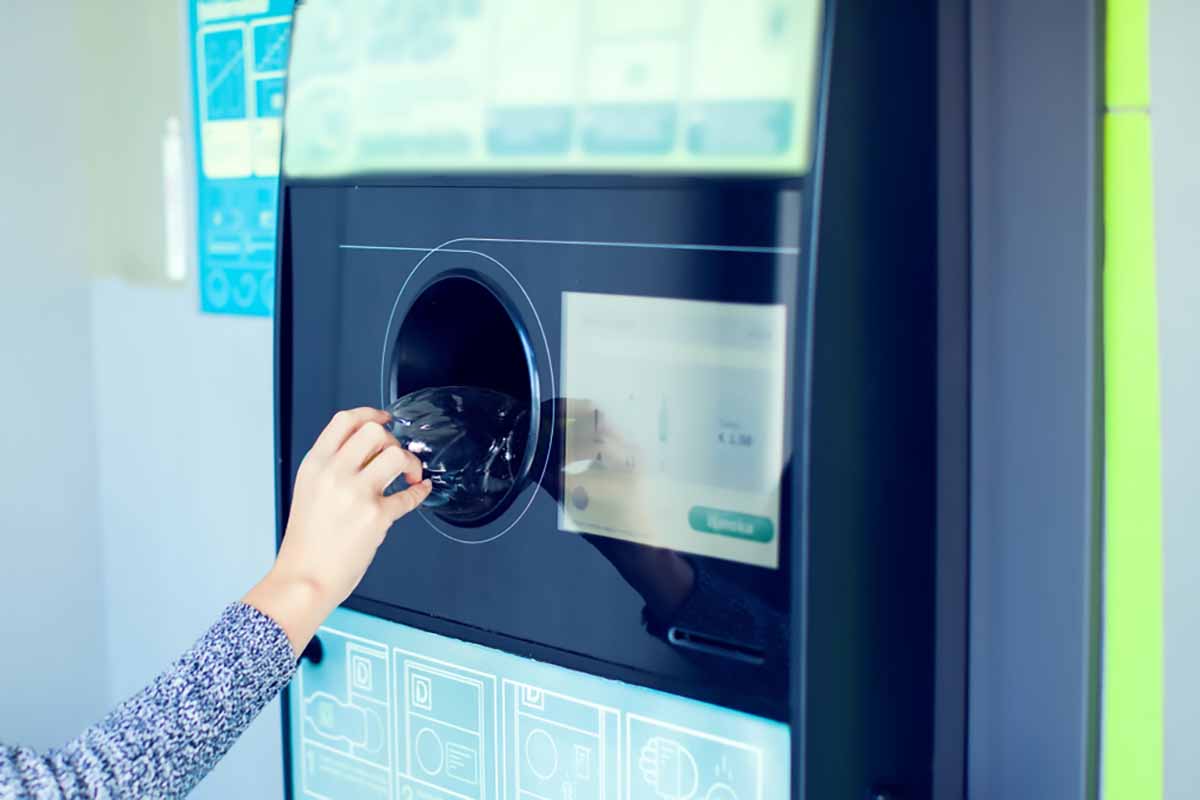
U.S. states with container deposit programs have the highest recycling rates in the country, according to new research. | Aleks333/Shutterstock
A report from Eunomia Research and Consulting found that nine of the 10 states with the highest recycling rates have deposit return systems, and that bottle bill states also contribute a higher percentage of packaging that is recycled in the U.S.
The “50 States of Recycling” report, from Eunomia and Ball Corporation, found that states with deposit return systems (DRS) account for 27% of the U.S. population, but provide 47% of all packaging recycled, 51% of all aluminum cans and glass bottles recycled and 61% of all PET bottles recycled in the country.
Overall, states with DRS recycle 34% of packaging, excluding fibers and flexible plastics, through closed-loop end markets compared to 7% in non-DRS states.
The report ranks state recycling rates with and without cardboard, boxboard, paper packaging, plastic films and flexible plastic packaging, because “while the recycling of these materials is important, their large volumes – 66% of the total weight of packaging analyzed – mask the performance of other packaging materials,” the report noted.
The 10 states with the highest recycling rates, excluding fibers and flexible plastics, in 2021 were: Maine (65%); Vermont (51%); Massachusetts (48%); Iowa (45%); Oregon (45%); New York (44%); California (41%); Michigan (40%); New Jersey (39%); and Connecticut (39%).
The 10 states with the lowest recycling rates were: West Virginia (2%); Louisiana (4%); Tennessee (5%); Alaska (6%); South Carolina (6%); Mississippi (6%); Oklahoma (8%); Alabama (8%); Texas (8%); and Colorado (11%).
The over 200-page report noted that since the first “50 States of Recycling” report was published in 2021, “overall recycling rates across the country have stagnated or declined” due to pandemic-related shutdowns and other factors.
The potential impact of extended producer responsibility programs is also modeled in the report.
Sarah Edwards, director of Eunomia North America, said in the press release that the rates in the report represent recycling and not simply collection, “meaning this rate is not what is collected for recycling, but rather what is available to be made into new products.”
“Recycling rates in many states are still measured in terms of what is collected for recycling, so to enable a ‘like for like’ comparison between states, the collection rates have been adjusted to show the real recycling rate,” Edwards said. “Having a true assessment of recycling rates will better enable us to understand what policy and program measures are needed to capture more quality material, increasing circularity, reducing our need for virgin materials and thus helping protect the planet.”

